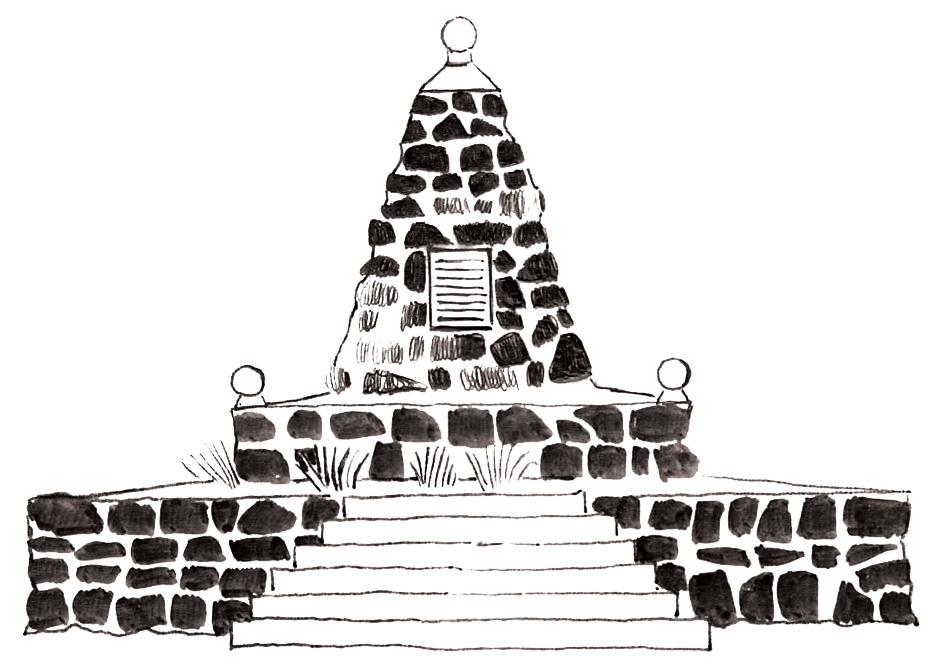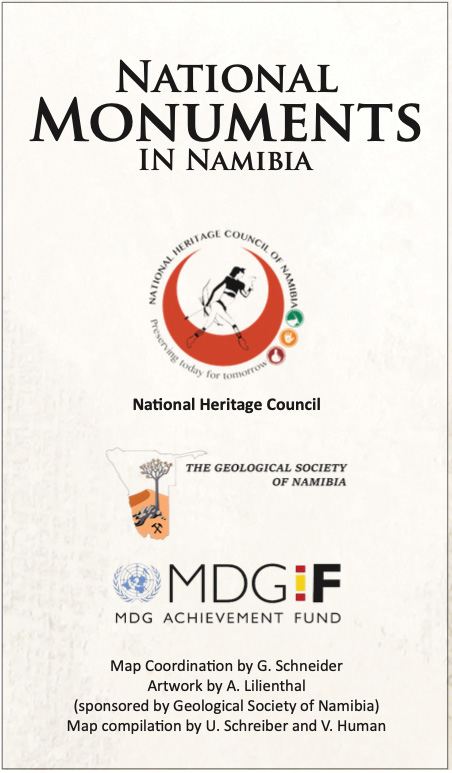

Kub monument
Namibia’s hidden heritage sites
We comb through travel guides, blogs, websites and do internet searches for interesting things to do and see when visiting another country. But even while travelling through our own country, we often try to find new activities or unknown places. Sometimes these fascinating obscurities can be found right under our noses. You might unknowingly pass it en route to the next destination on your itinerary or it might in fact be close to where you are staying for the night.
Text Le Roux van Schalkwyk
From the Autumn 2023 issue
Namibia attracts visitors with its colourful and diverse cultural heritage. The National Heritage Council of Namibia is mandated by the government to protect and conserve the places and objects of valuable significance. While some of these sites are popular and well-known tourist attractions like the Hoba meteorite, the Petrified Forest close to Khorixas, buildings like the Alte Feste and Fort Namutoni, and the Quiver Tree Forest near Keetmanshoop – to name a few – there are also several other interesting national monuments easily missed due to their unassuming nature.
Over the next year, we will be looking closer at some of the unknown or less visited national monuments that might easily be overlooked while travelling through Namibia.
Kub monument and first Afrikaans school, Kalkrand
Driving from Windhoek to the south, the C21 gravel road offers a shortcut from Kalkrand to Maltahöhe from which travellers can head to the likes of the Naukluft Mountains, Sossusvlei, Helmeringhausen and Lüderitz. It is, however, on this road just 20 km from Kalkrand, on the eastern bank of the Fish River, where you’ll find the remains of the small settlement of Kub.
The impressive pyramidal monument at Kub can be seen from the road, sporting a marble plaque that reads: In commemoration of the battle of Kub on 22 November 1904.
In the beginning of the 20th century, when Namibia was still a colony of Germany, Kub was a flourishing community with several Afrikaans families settling in the vicinity. It housed a hotel and police station with a gaol consisting of two cells. Most interesting, however, is the Afrikaans school started by the settlers who wanted their children to be educated in their mother tongue instead of sending them to the German school at Gibeon. The school opened in 1903 and eventually housed 25 learners.
On 22 November 1904, a battle took place between the Namas and the German Schutztruppe. Little is known about the event apart from the fact that seven members of the Schutztruppe were killed, as well as seven of the Afrikaans farmers who volunteered to help the Germans. Another monument at Kub commemorates these volunteers and reads: In commemoration of the seven heroes who held key positions during the battle of Kub during the 1904 – 1907 Nama War. Interestingly, the first teacher at the school, a Dutchman named Albertus Kooij, also took part in the fighting.
During World War I the school was mostly closed, but was opened again in 1917 under South African administration. It would eventually close its doors on 12 December 1958 due to the B1 trunk road and railway line that were built through the nearby settlement of Kalkrand, which led to a new and larger school being built there.
During its 50th anniversary in 1953, a memorial stone was placed at the school with the inscription: 1903-1953 In grateful commemoration of the founders of the first Afrikaans school at Kub, established 1903.
Today all that is left apart from the monuments are the remains of the hotel and the school, as well as a large concrete “SAP” sign from a police station later built by the South African Police near the monument, but which has since been demolished.
While Kub is generally referred to as the first Afrikaans school in Namibia, an Afrikaans school in Gannapan near Karasburg supposedly operated from as early as 1893.






